Theresia Krausl
The European Parliament voted against a proposal to restrict the use of agricultural pesticides in November 2023. These chemicals, designed to protect crop yields from pest insects and other organisms, can pollute water and air and threaten the people and wildlife that sustain agriculture’s vitality. our landscapes.
In some ways, Europe and its governing bodies are leading the world in setting and achieving sustainability goals. The EU parliament’s inability to limit pesticide use stands in contrast to this idea, not to mention international commitments.
Our research shows that efficient use of pesticides in agriculture will be essential to maintaining the health of bumblebees in particular – one of the most important pollinators of crops and wildflowers.
Lab results versus the real world
Decades of laboratory experiments have tested thousands of pesticides to show that they can individually be fatal to bees. Such toxicity tests evaluate the potential harm of these compounds before they are used to inform pesticide regulations.
But do the effects documented in laboratory tests reflect what happens when these chemicals are used in the environment? Field tests of pesticides are rare and, like laboratory tests, they typically look at individual compounds. This is a problem because field-based monitoring has shown that bees are actually exposed to multiple substances during their foraging behavior in agricultural landscapes.
Many different pesticides, including those highly toxic to bees, have been found in the bodies of bees, their food, and the structures that make up their nests, such as wax and soil.
While it may seem logical to assume that chemicals shown to be toxic in the laboratory will have similar effects in the field, we know that where chemicals end up and persist in the environment varies and the impact on bees can differ depending on many social and social circumstances. ecological factors.
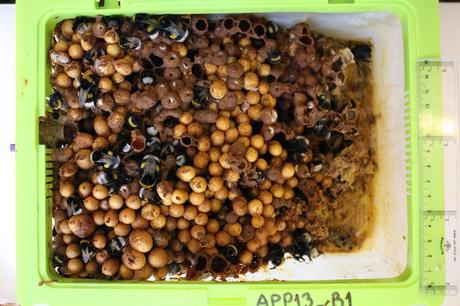
A well-established colony in the wild may contain several hundred bumblebees. Major Rundlöf
Until now, it was unclear how exposure to multiple pesticides in landscapes affected the way pollinators grow, survive and reproduce. Our new work shows that this exposure to nature poses a significant threat to bumblebee health.
Colonies in danger
We have placed more than 300 commercially farmed bumblebee colonies in 106 farmland locations in eight European countries. We collected pollen samples from the colonies and screened them for 267 pesticides.
We found that the pollen that bumblebees collected and stored in their nests was contaminated with multiple pesticides, an average of eight different substances per colony – the most contaminated colony contained 27 different substances. We calculated the risk that pesticides pose to each colony, by taking into account the amount and toxicity of different pesticides found in their pollen.
We also monitored the performance of bumblebee colonies by weighing them before, during and after they were deployed into agricultural landscapes and by counting all bees at the end of the experiment.
Colony growth, measured as the change in colony weight over time, was lower in colonies with higher pesticide risk. Bumblebees also produced fewer offspring in these colonies than in the colonies with a low pesticide risk. These effects were worse in landscapes with lots of cropland, demonstrating the importance of semi-natural habitats and other flower-rich areas for pollinator populations.
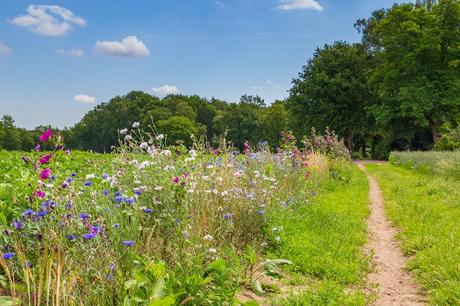
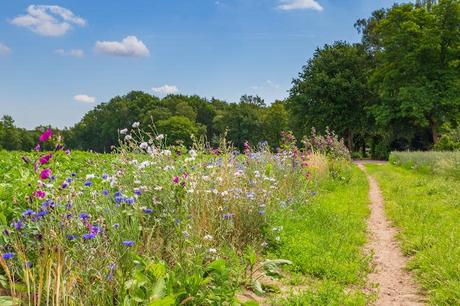
To protect pollinators, a proposal from the European Food Safety Authority would ensure that bumblebee colonies lose no more than 10% colony strength, measured as the number of bees in a colony, due to the use of pesticides. Yet 64% of the bumblebee colonies we studied lost more than this over the course of our research compared to colonies in the least risky sites.
Despite having one of the strictest pesticide regulatory processes in the world, our research has shown that the EU is failing to protect the organisms that these chemicals should not target, such as bees.
Monitor pesticides like medications
The proposal, which was rejected at the end of 2023, may receive a second reading in the European Parliament. But given that 299 MEPs previously voted against it, we are not optimistic about its chances. Instead, we take hope from ongoing efforts to improve environmental risk assessments of agrochemicals and developments at COP28, the latest UN climate change conference in Dubai.
Pesticide risk assessments can benefit from lessons learned in regulating pharmaceutical products. Like pesticides, pharmaceutical products undergo pre-approval testing with phased pre- and clinical testing before being licensed for use. But once a drug is approved, long-term monitoring protects against unexpected effects when used on a large scale. This kind of post-approval monitoring under real-world conditions is urgently needed for pesticides.
This should not replace prior testing. Our experience has simply shown that pesticides that pass laboratory tests, such as neonicotinoids, are only shown to be harmful by post-approval field testing with bees other than honeybees, which are unusual for their large colony sizes and complex social behavior. Our approach to monitoring pesticides and their effects on non-target species could be part of future risk assessments for pollinators.
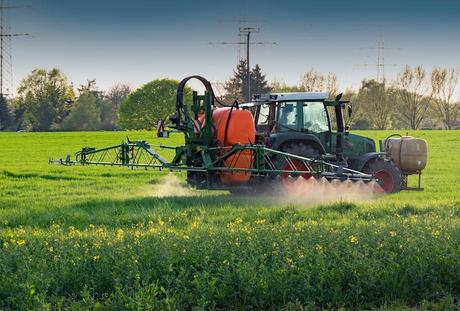
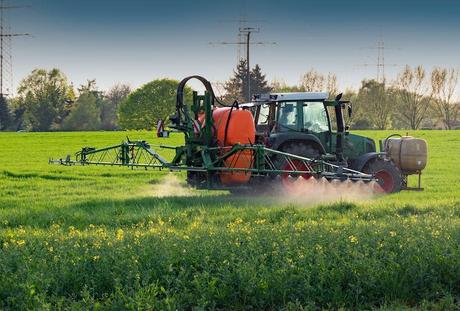
Of course, it would be better to completely change the way pesticides are used in agriculture and reduce farmers’ demand to use them. For now, we are optimistic about the commitments made at COP28, including a $17 billion fund to develop agricultural practices that are resilient to climate change and less dependent on chemicals.
One of the largest initiatives, with partners including The Nature Conservancy, Google and the Brazilian state of Para, would encourage regenerative agricultural practices such as reduced tillage and lower pesticide use.
We hope this is progress.


Imagine the weekly climate newsletter
Don’t have time to read as much about climate change as you’d like?
Instead, get a weekly digest in your inbox. Every Wednesday, The Conversation’s environmental editor writes Imagine, a short email that delves a little deeper into just one climate issue. Join over 30,000 readers who have subscribed so far.
This article is republished from The Conversation under a Creative Commons license. Read the original article.
The conversation
Charlie C. Nicholson receives funding from the Swedish Research Council Formas (grants 2018-02283, 2023-01025).
Jessica Knapp receives funding from the Swedish Research Council Formas (grant 2022-00476) and the Strategic Research Area “Biodiversity and Ecosystem Services in a Changing Climate” (BECC), which is funded by the Swedish government.
Maj Rundlöf receives funding from Formas, a Swedish Research Council for Sustainable Development, the Swedish Research Council, the Strategic Research Area “Biodiversity and Ecosystem Services in a Changing Climate” (BECC), funded by the Swedish Government, the Swedish Environmental Protection Agency, the Swedish Chemicals Agency , the Swedish Agricultural Council, the German Environment Agency and the European Union through Horizon Europe. As an external expert, she advises national and European authorities and other stakeholders in the field of pesticides and bees and other pollinators.
